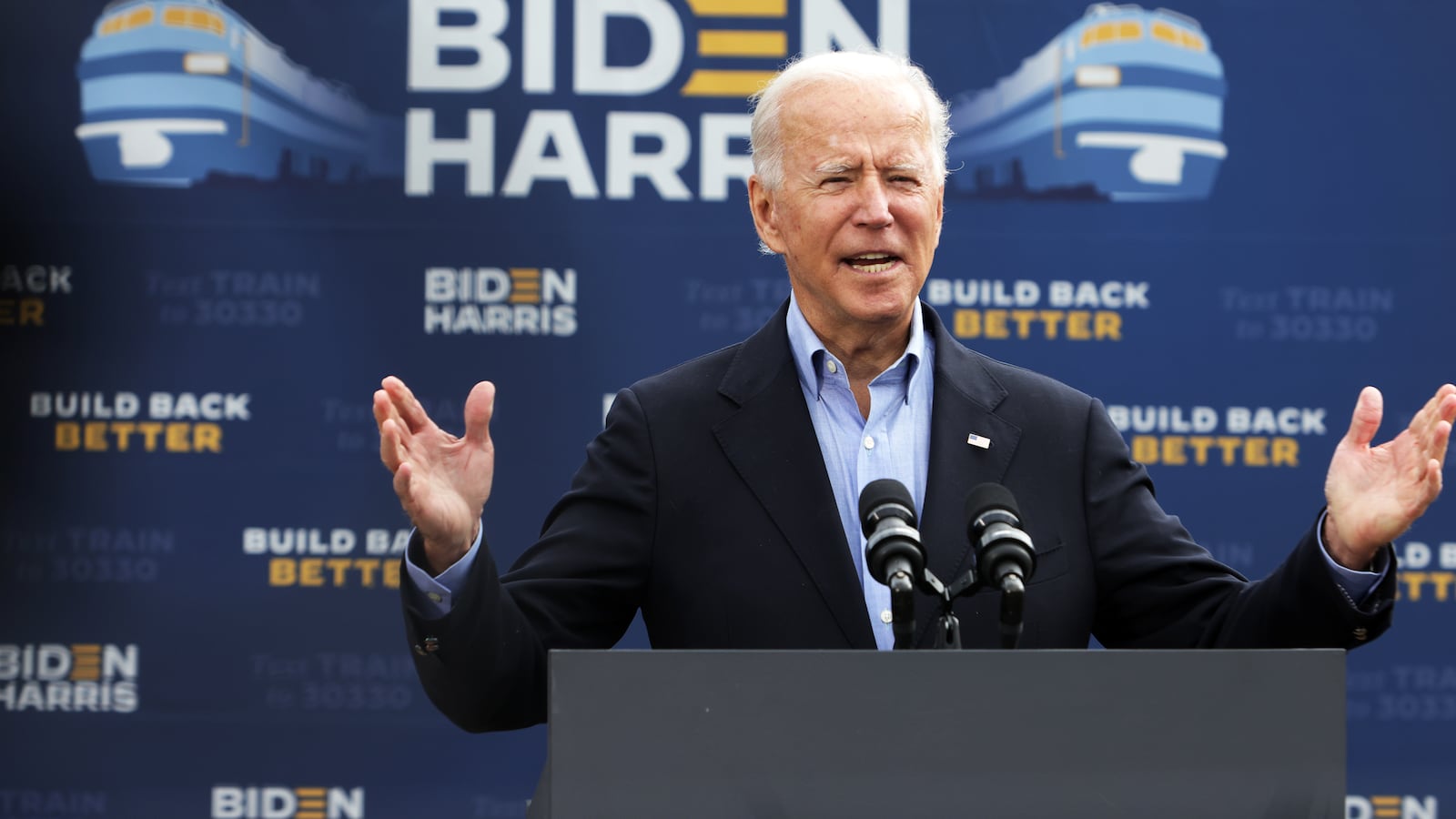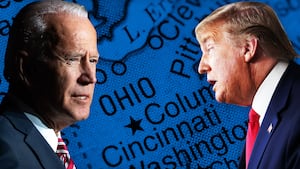Once again, America’s eyes are fixed on Ohio as our state regains its battleground status and begins early voting in the countdown to November 3. A 30,000-foot-view shows former Vice President Joe Biden and President Donald Trump in a neck-to-neck race. But a closer look on the ground shows an intricate web of family, friend and neighbor relationships that may be turning the tide enough for Biden to win out over Trump’s broken promises.
The media paints Ohio as a grim, bygone state where the white working class reigns under the shadow of shuttered factories. But the reality is much more colorful. When a 28-year-old gay, Black son of two former GM factory workers from Dayton who went bankrupt, a 30-year-old Filipina immigrant organizer and recent Ohio transplant who is voting in her first-ever presidential election, and her 84-year-old Italian Catholic lifelong Republican neighbor from the Cincinnati suburbs who is voting for Biden this year, start talking and listening to each other—that’s where the power lies to turn this election into a referendum against everything Trump stands for.
That’s what I and other organizers like me have been doing all over the state. Our strategy is simple. Unable to knock on doors because of the virus, and instead of calling or texting strangers, we conduct conversations with our friends, family and neighbors—holding our own networks accountable when it comes to voting. Using an app called OutVote, we’re able to remain physically distant while reaching those closest to us and recruit others to join Zoom-based outreach parties.
It’s called relational organizing, and we’ve already activated more than 450,000 voters throughout the state, translating into more than 180,000 votes in post-industrial cities like Cleveland and Dayton. With over 1,300 of our volunteers engaged, Stand Up For Ohio is working with Community Change Action to run one of the largest relational organizing programs in the country. And when Ohio is a toss-up that could be decided by the 480,148 young voters of color in the state, working in these margins may make a world of difference.
One of our organizers, a first-generation Filipina immigrant and journalist named Maki, became an American citizen just two years ago. When she moved to Ohio last year for her husband’s job, she didn’t know much about the state. I met her while she was working on a story about Black voters in Dayton. I told her how disenfranchised and abandoned people like my parents felt after GM left my hometown, even as Trump boasted about the country’s economic growth. It was then that she decided to join our ground game.
“I was already planning to vote against Trump, but I wasn’t sure about the process during the pandemic,” Maki said. She eventually decided to vote early for Biden in person, after fellow organizers talked her through all the different ways she could vote safely. “This was my first time ever voting in a presidential election. And it’s the most important election of our time, so I wanted to make sure I got it right.”
Ohio has become younger, better educated, more racially and ethnically diverse, and more liberal. According to the Ohio Voter Contact Center, about 912,000 newly registered voters have been added to the polls since 2016. Even as the Ohio Secretary of State threatens to purge over 115,000 existing Ohio voters from the rolls, there are more than 250,000 new and young voters who'll be voting for the first time, and likely Democratic, in this election.
These people who are new to the electorate and need local guides who can help them through the process to cut through the noise. The best person who could do that is someone in their life whom they already trust.
So Maki talked to her neighbor, Marie, who has been voting since 1960. At 84 years old, Marie is a pro-life Catholic who dislikes “big government,” but she also believes in the need for gun control and police reform.
Over time, the pair built an unlikely friendship upon mutual reciprocity and trust: at the start of the pandemic, Maki gave Marie her spare masks and sanitized common areas, while Marie shared herbs from her garden. The two exchange recipes and sometimes talk politics on Marie’s porch.
Marie is a lifelong registered Republican who grew up steeped in Cincinnati politics, but she’s often straddled the fence. She voted for Reagan, Bush Sr. and Bush Jr. But then switched to Obama in ‘08, and in 2016, she voted for Hilary Clinton.
A former school teacher and administrator, she plans to vote for Biden because she feels Trump’s immigration policies are racist. While white suburban voters like her have attracted the spotlight in the media for their potential to shape the election, the Black Lives Matter and immigrant rights movements have brought issues of race that have moved white women to the forefront of the public conversation in Ohio and across the country. In fact, Marie admitted that it would take young voters, people of color and marginalized people coming together to turn the election in Biden’s favor.
As early voting continues to pick up steam throughout Ohio, the power of personal and community relationships is undeniable. A single conversation with a friend or a loved one holds infinitely more power than a throwaway TV ad or a campaign speech ever could. We’re out there learning—and proving—that Ohio is a mosaic, not a monolith.
Prentiss J. Haney is the co-executive director for Stand Up For Ohio, an organization that works to build power for everyday Ohioans, and a community organizer and artist who lives in Cincinnati.







